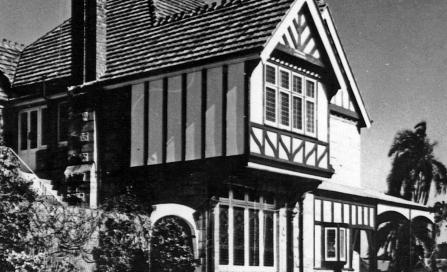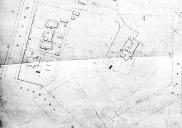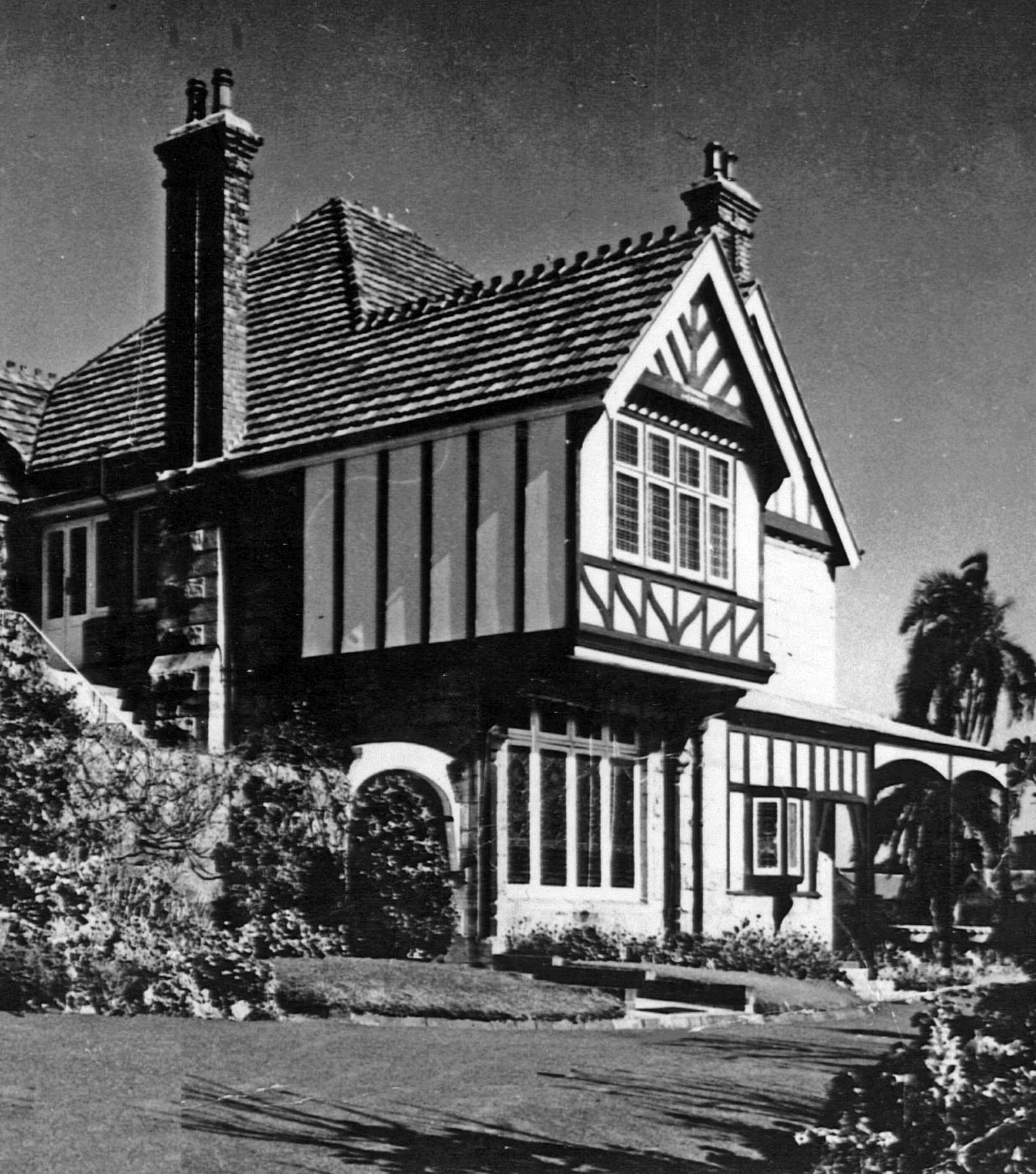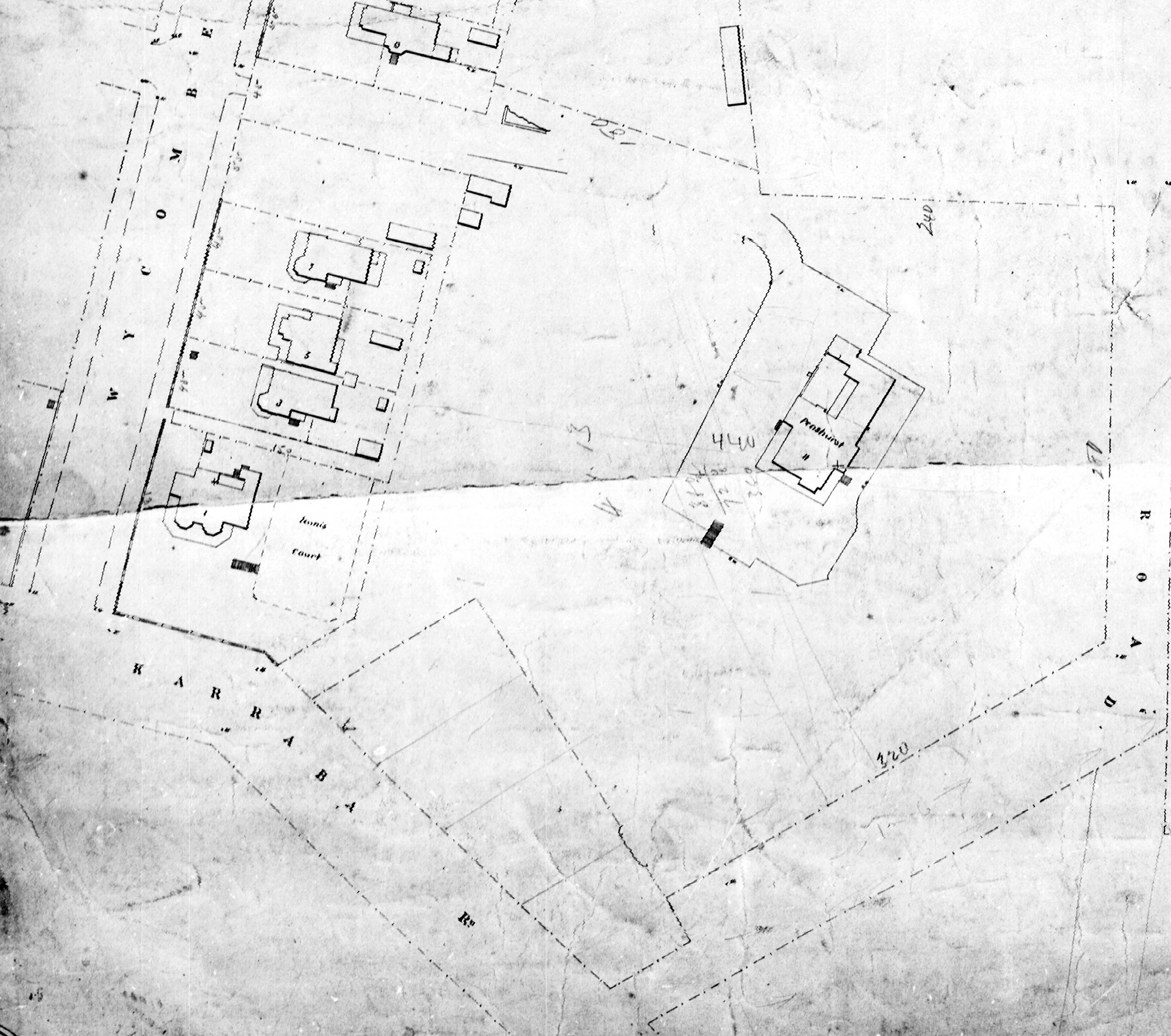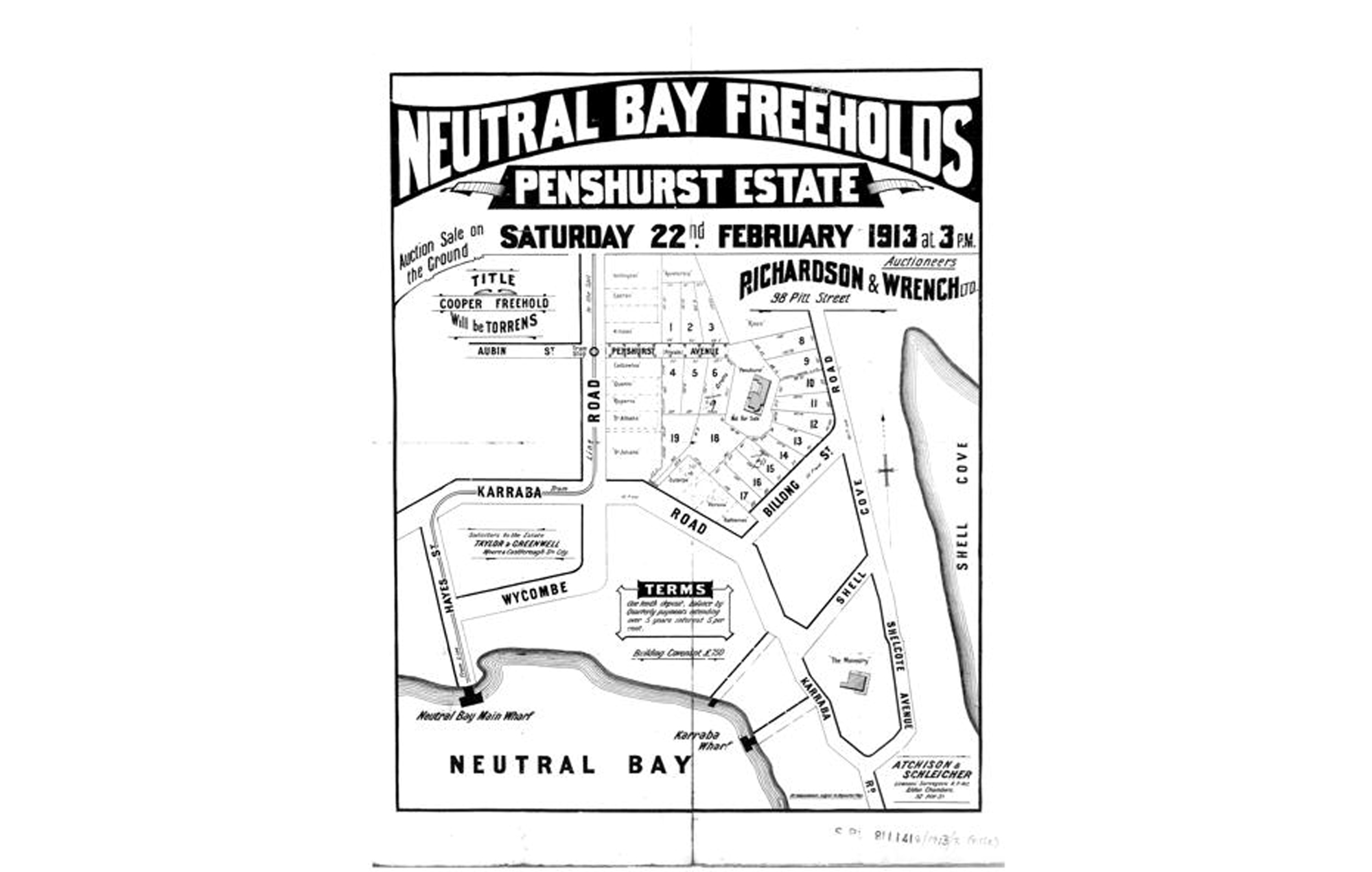|
|
‘Penshurst’Penshurst Avenue, Neutral Bay (demolished 1968)Walter Liberty Vernon’s family home ‘Penshurst’ was one of the most significant buildings constructed in Sydney.Completed in 1885 of local sandstone and red cedar, it was quite possibly the first house in the city expressing the English Revival style. The name and design of the house, with its Tudor-like half timbered upper level and gable, tall chimneys and overhanging 'oriel' window were a direct reference to the English Revival ‘cottages’ built by George Devey around the medieval manor ‘Penshurst’ in Kent, England, in 1850. Vernon’s ‘Penshurst’ was a forerunner of Sydney’s Federation-era houses and the ubiquitous modest suburban Californian Bungalows that followed through to the 1920s, many of which still featured half-timbered gables. Like other substantial homes of the period ‘Penshurst’ boasted textured wall paper and elaborate stained glass windows. Both could be bought locally from the interior decorators Lyon and Cottier who had traded in Sydney from 1873. It is probable, however, that Vernon imported fittings from England. The Liberty company, owned by his cousin, was almost certainly a source of some of these. The life-sized stained glass windows that graced one of the main living areas were probably imported. They depicted the explorer Sir Walter Raleigh and writers William Shakespeare, Thomas More and John Milton. The windows were evidence of Vernon’s continued attachment to English culture but were not unusual in their Anglophilia. While they may have held to a developing and distinct sense of ‘national’ identity in the years leading to Federation, many white Australians nonetheless remained closely attached to their Britishness. As a man who had left his home country because of illness, Vernon undoubtedly chose a home high above Sydney Harbour to catch the recuperative ‘sea air’. Nonetheless the Vernons left ‘Penshurst’ in the early 1890s, possibly for financial reasons, and the house was let out. The mining entrepreneur and art collector Leonard Dodds lived there for a period and during this time Arthur Streeton painted a view of Sydney Harbour from the house. The grounds were subdivided as the Penshurst Estate in 1913, just before Walter’s death. ‘Penshurst’, itself, sold in 1916. The house remained a fashionable family home for some years. By the end of the 1920s most of the garden had been destroyed by the creation of Penshurst Avenue and the development of the new building sites. The house and much of the subdivided land was then owned by dentist John Bradley and his wife Caroline. Buildings, including blocks of flats filled the subdivision. As was often the case with large houses, ‘Penshurst’ was eventually turned over to other uses. It became a boarding house and then a home for boys. In the mid-1960s the house was expensively ‘restored’ with elaborate Rococco-style furnishings that sat incongruously with the English Revival exterior. The facelift, however, was not enough to save it. By 1968 large sites in Neutral Bay were eagerly sought by developers for medium high and density flats and town houses. ‘Penshurst’ was bought and slated for demolition. Some sought to point out the historical significance of the building. Gwen Bristow wrote passionately about ‘the beautiful old stone house’ that was her childhood home (North Shore Times, 10/4/1968). But there was no heritage protection legislation in place to support the claims of historical value. In any case, North Sydney Council determined that ‘there was no particular merit’ to the place other than ‘the age of the building’ and its association with ‘a Col. Vernon’. Such a vague reference to the former Government Architect and local Alderman suggests the fading of corporate memory if not the irrelevance of history to planning. Council did, however, reject the proposed replacement, a multi-storey block of flats, because it contravened codes for flats and would overshadow surrounding buildings. In the end 'Penshurst' was demolished and replaced by low rise townhouses designed in the style of a Mexican hacienda.
|
|

